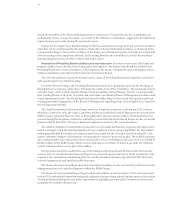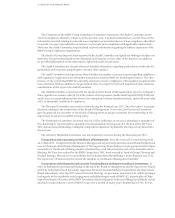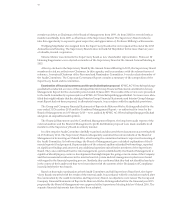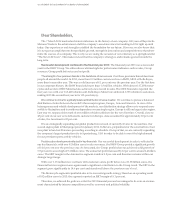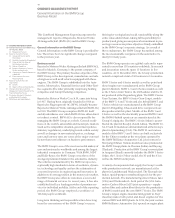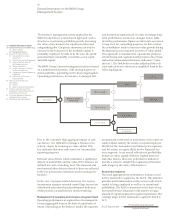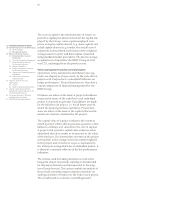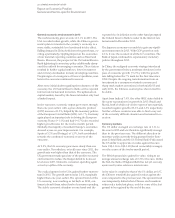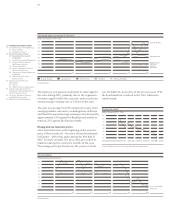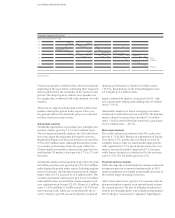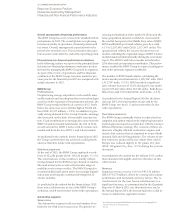BMW 2015 Annual Report Download - page 20
Download and view the complete annual report
Please find page 20 of the 2015 BMW annual report below. You can navigate through the pages in the report by either clicking on the pages listed below, or by using the keyword search tool below to find specific information within the annual report.
20
18 COMBINED MANAGEMENT REPORT
18
General Information on the
BMW
Group
18 Business Model
20 Management System
23 Report on Economic Position
23 General and Sector-specific
Environment
27 Overall Assessment by Management
27
Financial and Non-financial
Performance Indicators
29 Review of Operations
49 Results of Operations, Financial
Position and Net Assets
59 Comments on Financial Statements
of BMW AG
62 Events after the End of the
Reporting Period
63 Report on Outlook, Risks and
Opportunities
63 Outlook
68 Report on Risks and Opportunities
81 Internal Control System and Risk
Management System Relevant for
the
Financial Reporting Process
83 Disclosures Relevant for Takeovers
and Explanatory Comments
87
BMW Stock and Capital Markets
The business management system applied by the
BMW Group follows a value-based approach, with a
clear focus on achieving profitable growth, increasing
the value of the business for capital providers and
safeguarding jobs. Corporate autonomy can only be
ensured in the long term if the available capital is
profitably
employed. For this to be the case, the profit
generated must sustainably exceed the cost of equity
and debt capital.
The BMW Group’s internal management system is based
on a multilayered structure, with varying degrees of
detail applicable, depending on the level of aggregation.
Operating performance, for instance, is managed first
Due to the extremely high aggregate impact of vari-
ous factors, it is difficult to manage a business pro-
actively simply by focusing on value added. This
key indicator therefore only serves for intermediate
reporting purposes.
Relevant value drivers which could have a significant
impact on profitability and the value of the business are
defined for each controlling level. The financial and
non-financial value drivers referred to above are reflected
in the key performance indicators used to manage the
business.
In the case of project-related decisions, the system
in
corporates a project-oriented control logic focused on
value-based and return-based performance indicators,
which provide a crucial basis for decision-making.
Management of operating performance at segment level
Operating performance at segment level is managed in
its most aggregated form on the basis of capital rates of
return. Depending on the business model, the segments
and foremost at segment level. In order to manage long-
term performance and assess strategic issues, addi-
tional
key performance figures are taken into account at
Group level for controlling purposes. In this context,
the contribution made to business value growth during
the financial year is measured in terms of “value added”.
This approach is translated for operational purposes
at both Group and segment level by means of key finan-
cial and non-financial performance indicators (“value
drivers”). The link between value added and the rele-
vant value drivers is shown in a simplified form in the
following diagram.
are measured on the basis of total return or the return on
equity capital, namely the return on capital employed
(RoCE) for the Automotive and Motorcycles segments
and the return on equity (RoE) for the Financial
Ser-
vices segment. As an overall reflection of profitability
(return on sales), capital efficiency (capital turnover)
and other factors, these key performance indicators
provide a cohesive insight into segment performance
and changes in the value of the business.
Automotive segment
The most aggregated key performance indicator used
for the Automotive segment is the RoCE. This indicator
provides useful information on the success with which
capital is being employed as well as on operational
profitability. The RoCE is measured on the basis of seg-
ment profit before financial result and the average
amount of capital employed in segment operations. The
strategic target for the Automotive segment’s RoCE is
26 %.
Profit before financial result
RoCE Automotive = Capital employed
General Information on the BMW Group
Management System
Revenues
Profit
×−
–
×
÷
÷
Expenses
Return on sales
Capital turnover
Capital employed
Cost of capital
Average weighted cost
of capital rate
Return on capital
(RoCE / RoE)
Value added


